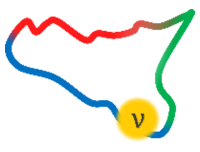Speaker
Description
A novel functional form for fitting neutrino luminosities from
core-collapse supernovae was recently proposed by Lucente et al. (2024),
capturing the effects of convection inside the proto-neutron star (PNS)
through a power-law temporal decay. While this model accurately
describes the cooling phase, it does not account for the neutrino flux
during, approximately, the first second, which is primarily driven by
accretion. To address this, we introduce an additional term that models
the early post-bounce phase in a simple yet effective way. After
validating this extended model against multiple simulation datasets, we
explore its applicability to SN1987A data. This approach allows us to
extract meaningful estimates of the PNS temperature and radius. The
radius is of particular interest, as it is closely linked to
gravitational wave (GW) emission. Improved radius estimates may
therefore enable joint neutrino-GW detection strategies and enhanced
multi-messenger parameter inference.

